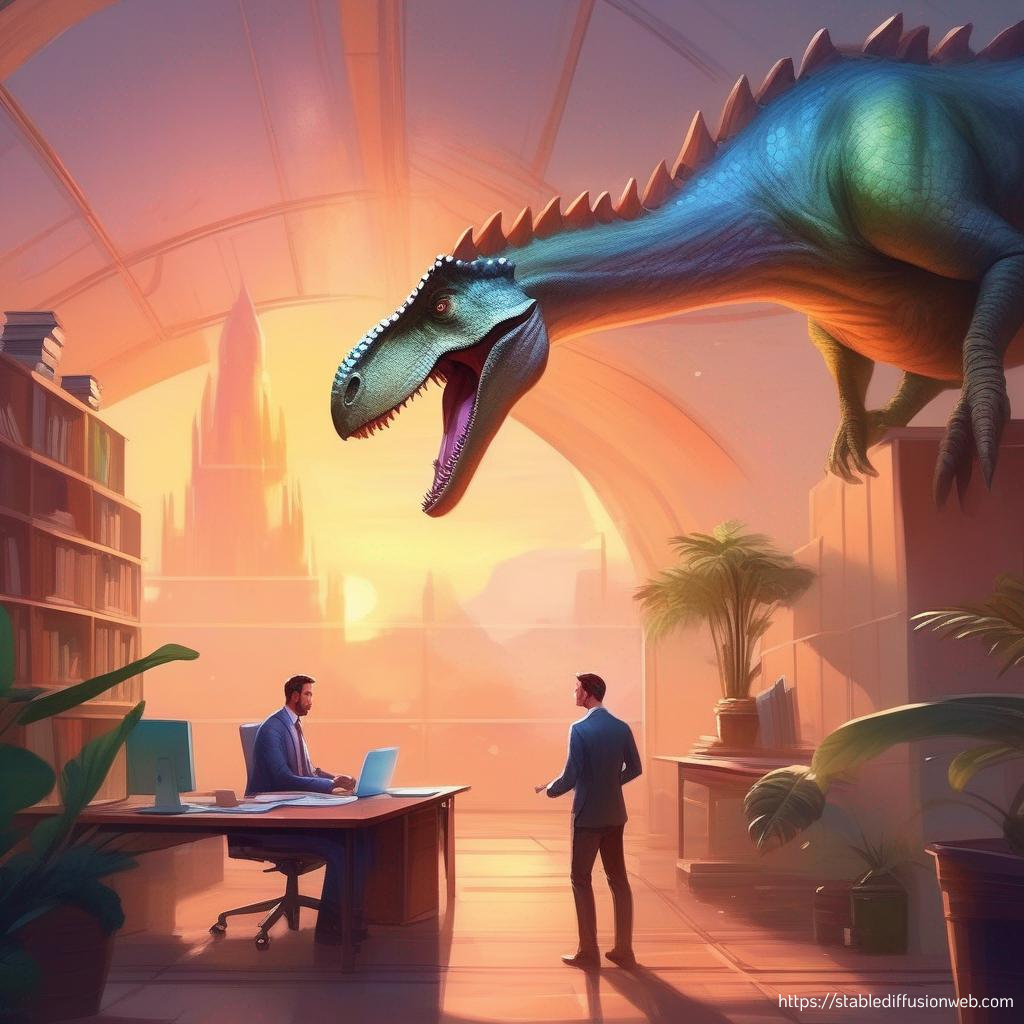Adapt or Extinct: Navigating Workplace Dinosaurs and Their Habits
"Unearth the secrets to thriving in a corporate world populated by office dinosaurs. From decoding their habits to providing innovation, this blog displays strategies for a workplace where tradition and innovation coexist.
When I embarked on my journey with a new company, the initial encounter with a senior figure left an indelible mark. He casually mentioned that nobody liked him and he didn't care that nobody liked him. It left me contemplating whether this was his customary introduction to new starters, a practised ritual after years in the business. Much like a dinosaur, he seemed resistant to change and harboured an aversion to new faces, wary that they might suggest new ideas synonymous with change.
Eager to infuse innovation and fresh perspectives, I quickly realised he wasn't the only solitary dinosaur in the organisational landscape. Numerous others, stuck in a bygone era, relished the familiarity of their longstanding work practices. Any attempts by outsiders to disrupt their status quo were met with immediate disapproval, causing a toxic atmosphere.
It dawned on me that I wasn't the first to try and bring positive changes. Many predecessors with similar ambitions had walked the same path, only to exit the business when confronted with the harsh reality that convincing others to embrace change was a pointless exercise in the face of entrenched mindsets.
1) The Dance Between Innovators And Dinosaurs
If an organisation comprises a diverse mix of individuals, some resembling dinosaurs stuck in traditional practices, while others embody the spirit of innovators, constantly seeking new horizons. In such a dynamic setting, conflict becomes an inevitable factor, exerting its influence on the overall performance of the organization.
The clash between dinosaurs and innovators is akin to a tug-of-war that can disrupt the harmony within the workplace. Dinosaurs, resistant to change, may view the innovators as disruptive forces, unsettling the established norms they've grown accustomed to over the years. On the flip side, innovators may find the dinosaurs stifling progress, hindering the implementation of fresh ideas that could potentially elevate the organisation.

2) Can Office Dinosaurs Truly Evolve?
Certain dinosaurs within an organisation may remain stagnant due to the influence of a specific individual or a small group. When the organisational leadership team resists change, it becomes the primary impediment, casting a shadow over the entire business. A dinosaur-like boss, set in their ways, may not be the driving force behind team motivation. However, envision a scenario where this boss departs, making way for a new leader eager to revolutionise work methods for the better.
This fresh perspective might have the power to guide an unmotivated team towards a new mindset, awaiting the right catalyst to spark enlightenment. These individuals may have clung to outdated practices for so long due to disillusionment with the old ways of working, never having explored the potential for new opportunities and enhancements that could benefit everyone.
3) Presenting The Evidence
If you genuinely believe that a shift in the working paradigm can yield benefits for everyone involved, it's imperative to substantiate your stance with concrete evidence. Offering a comprehensive and optimistic overview of the envisioned outcome not only preempts potential scepticism or resistance but also fosters a conducive atmosphere for collaboration. The key is to convey your message with politeness, aiming to win favour rather than coming across as an attempt to showcase superiority and potentially alienate those with more traditional views.
By providing factual evidence, you paint a clearer picture of the advantages associated with the proposed change. This not only serves as a shield against potential criticisms but also showcases your meticulous preparation. When your colleagues realize that you've covered all bases, it instils confidence in your proposal and minimizes the likelihood of dismissive comments.
4) Avoiding Prejudgment And Assumptions
It's crucial to refrain from making premature judgments or assumptions, especially when dealing with individuals who have dedicated many years to an organisation. Their resistance to new ideas may be rooted in a practical understanding of the organisation's workings, derived from extensive experience. While they might have been innovators in the past, the grind of routine might have led them to settle for a steady paycheck deposited into their bank accounts every month.
Consider the possibility that these individuals, despite their initial innovative spark, encountered obstacles and political hurdles whenever they proposed new ideas. Faced with consistent roadblocks, they might have chosen the path of least resistance – opting not to pursue innovation further. It's essential to recognise that their reluctance may stem from a history of encountering obstacles rather than an inherent aversion to change.
5) Inspiring The Dinosaur

Contrary to belief, motivating employees with a lengthy tenure in the organisation might not be as challenging as it initially seems. While some individuals may prove resistant, holding on to bitterness due to unfulfilled career expectations, it's still worthwhile to attempt a motivational intervention. Even if the damage seems irreparable, making an effort can yield surprising results.
Granted, there will be cases where individuals adamantly refuse to alter their ways, especially if they feel their career aspirations have been halted by the powers above within the business. However, the key lies in recognising that change is still possible, even in seemingly extreme situations. When undertaking the task of motivating these "dinosaurs," acknowledging their efforts to adapt to a new way of working can be a game-changer.
Offering a small dose of praise and expressing gratitude for their successful attempts at adjusting to new work methods can work wonders. This not only validates their willingness to embrace change but also provides the encouragement needed to continue on the path of adaptation. It's a subtle yet powerful way to recognise and appreciate their efforts, providing a more positive and cooperative atmosphere within the organisation.
Conclusion
"In conclusion, guiding the presence of office dinosaurs requires a strategic approach that balances respect for experience with the need for innovation. Recognising the unique challenges these individuals face and implementing the discussed strategies can pave the way for a more harmonious and dynamic way of working.
Remember, the key lies in open communication, acknowledging small victories, and striving for a workplace that embraces both tradition and innovation. By doing so, we not only ensure the survival of our corporate ecosystem but also lay the groundwork for a thriving, adaptive, and resilient workplace.
As we continue to evolve in the corporate landscape, let's embrace the diversity of perspectives and experiences, understanding that it's this very diversity that propels us forward into a future where both dinosaurs and innovators can coexist and thrive.






